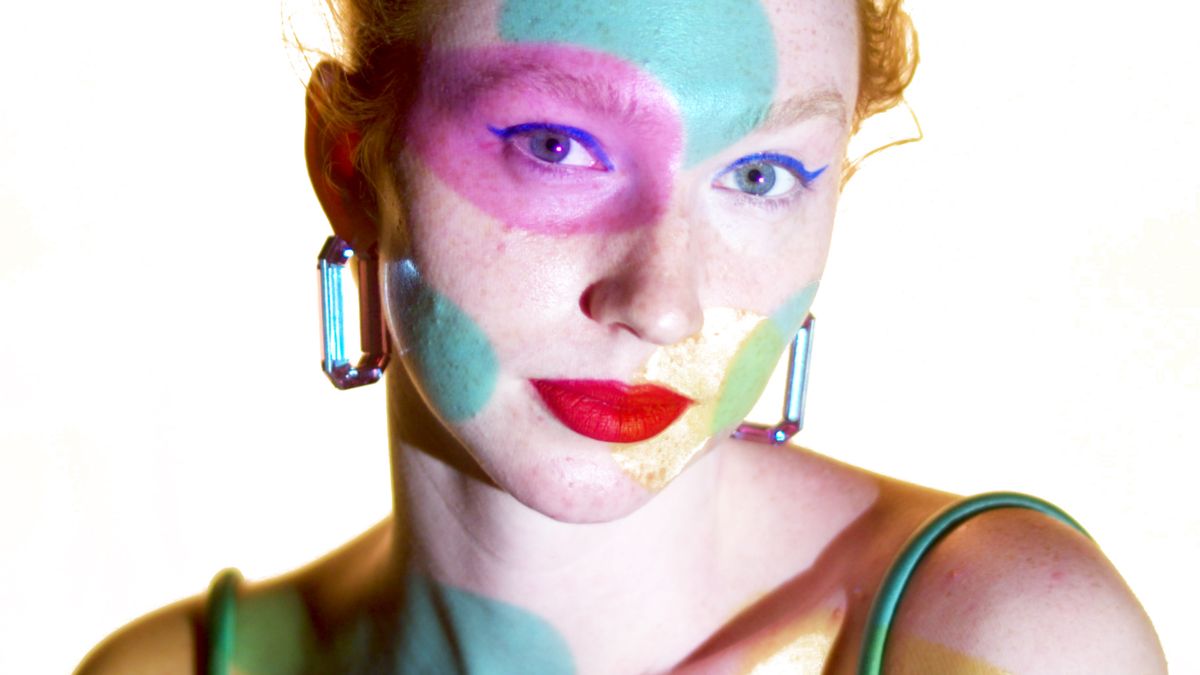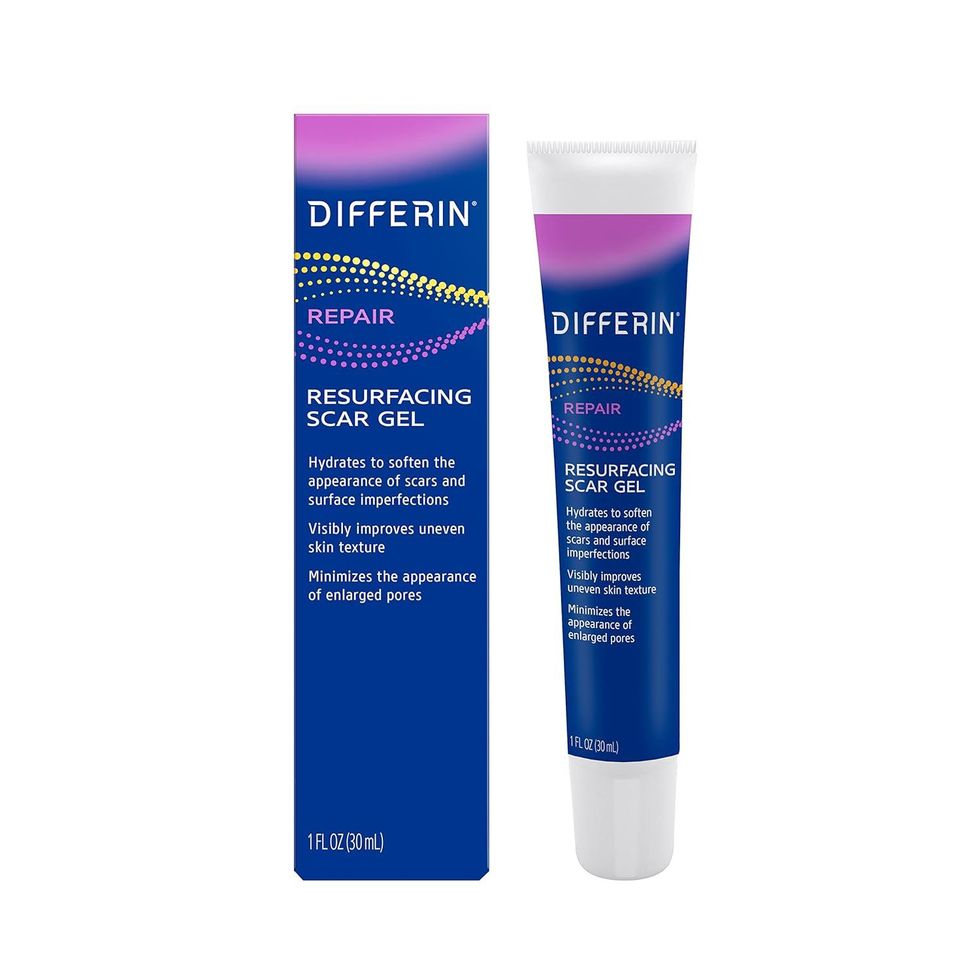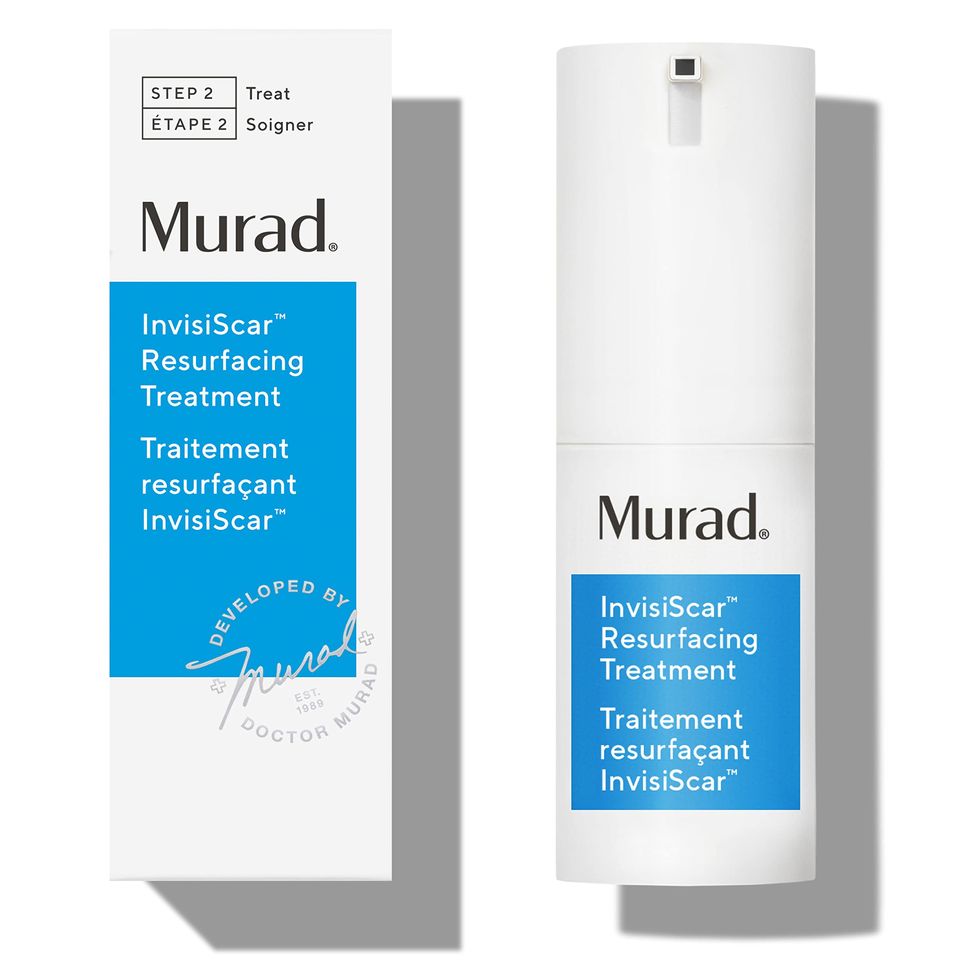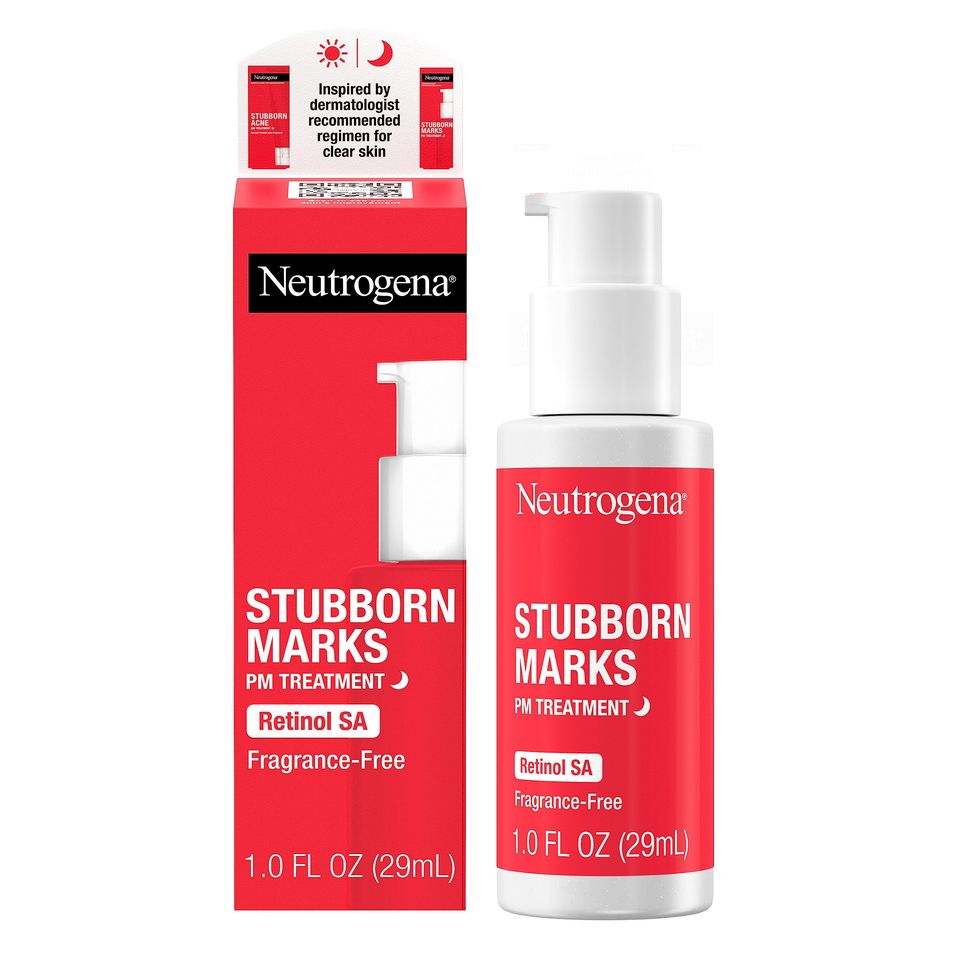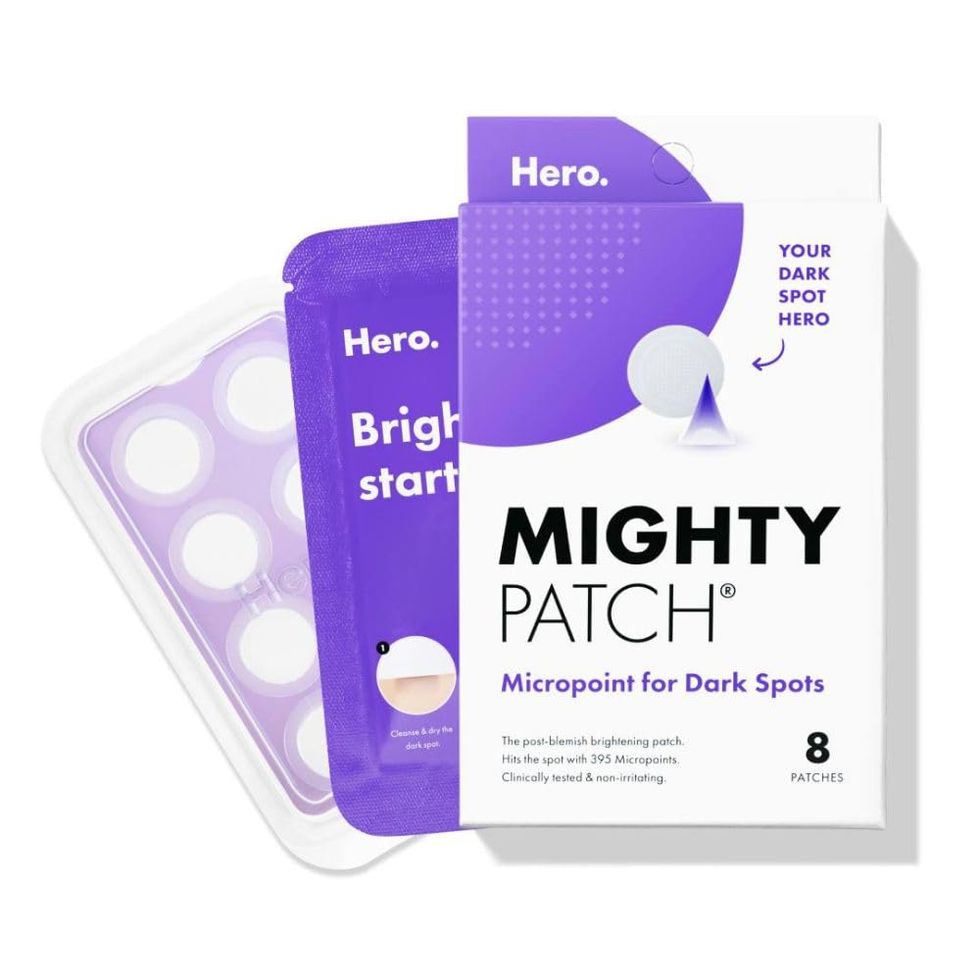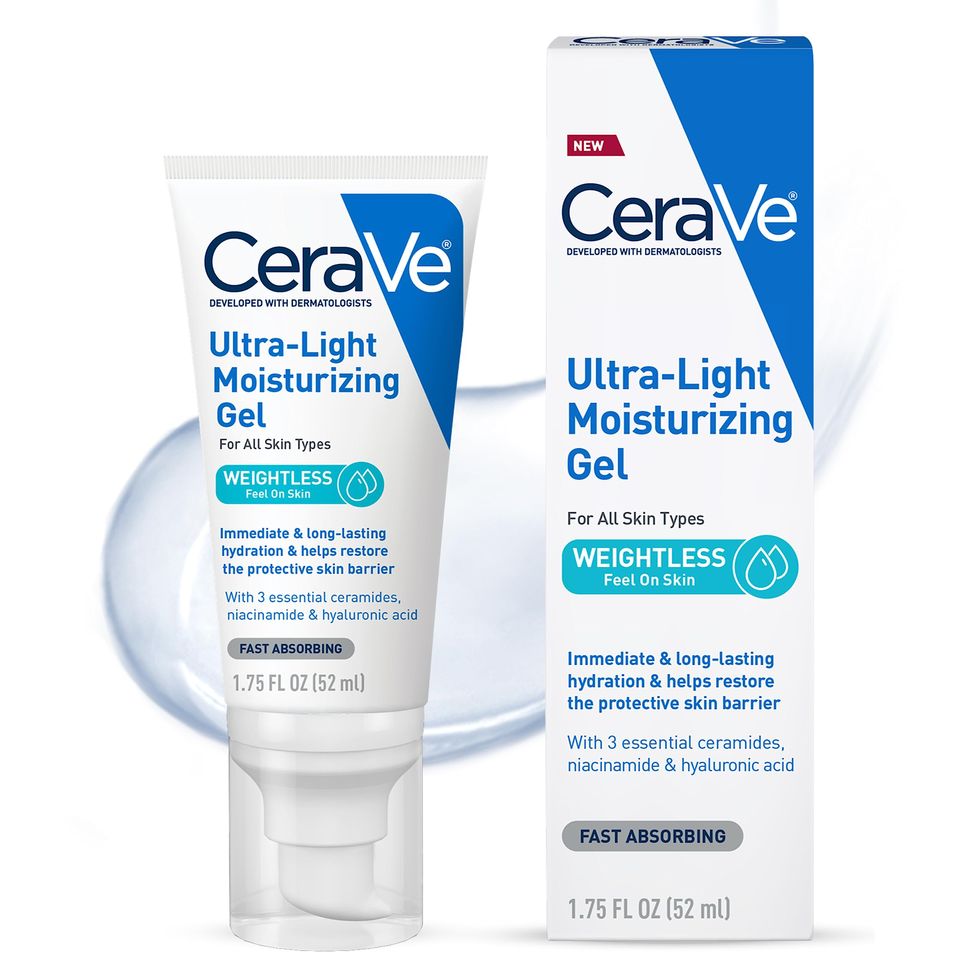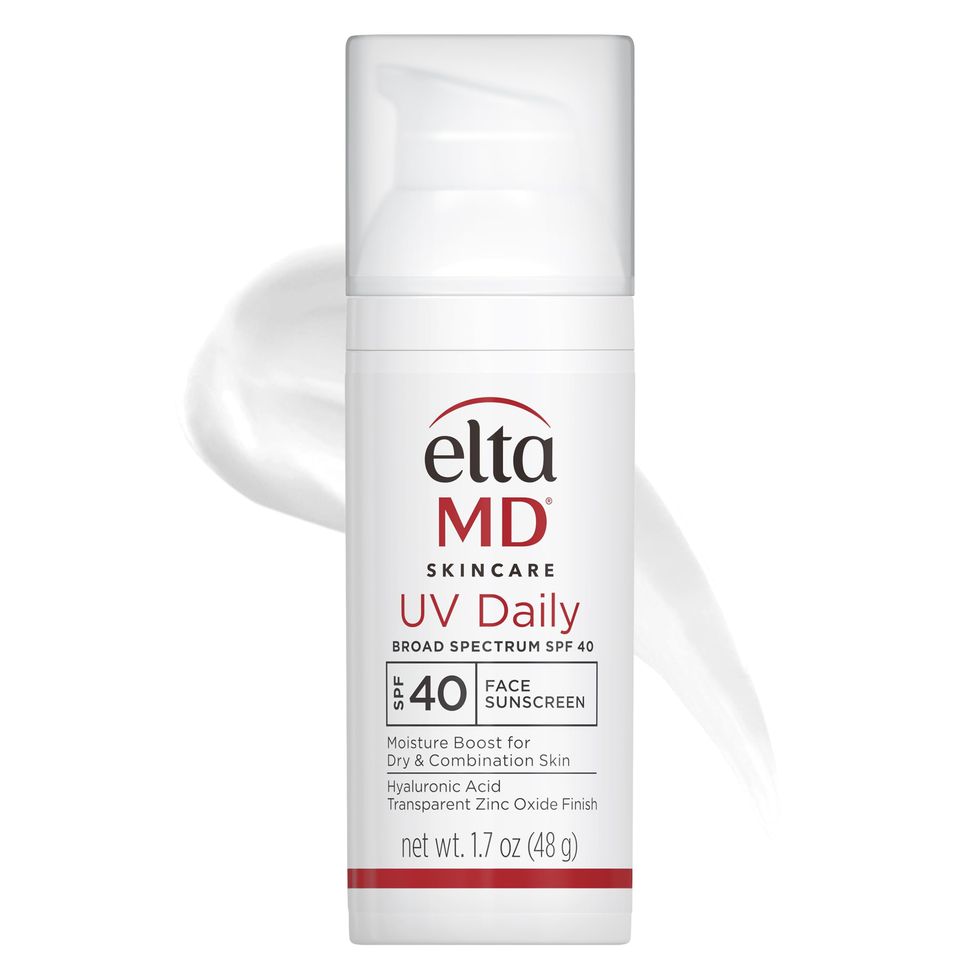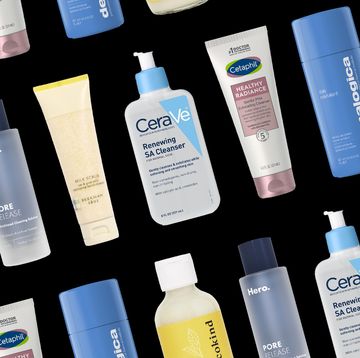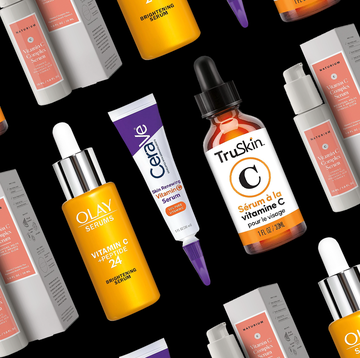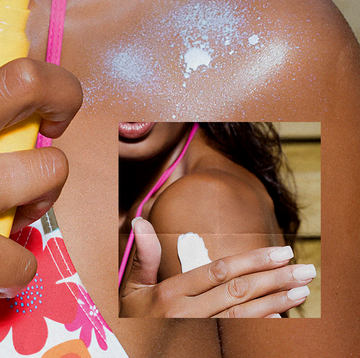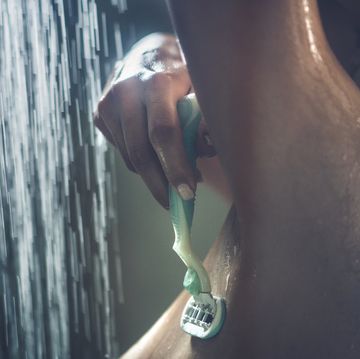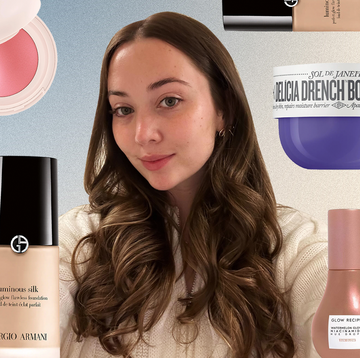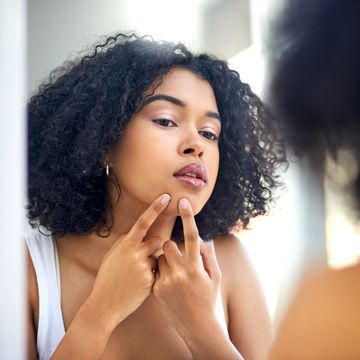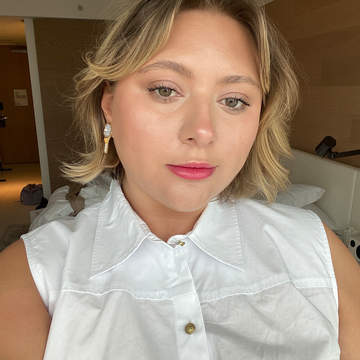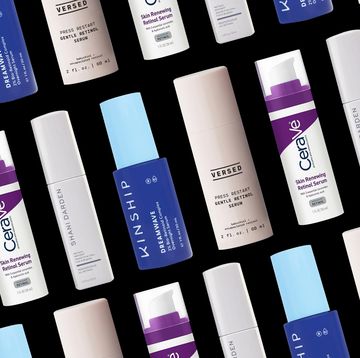I've dealt with hormonal acne for my entire life. And while the breakouts are definitely annoying, the resulting scars and dark marks they leave behind are even more annoying in my opinion. A breakout lasts a few days, maybe a week, but acne scarring—depending on the type and severity—can last for weeks or even months. Hence why I'm such a fan of professional laser treatments for acne scars.
Sure, topical skincare products (like vitamin C serums, dark spot correctors, and retinol creams) can sloooowly help reduce the appearance of acne scars and dark marks with months and months of consistent use, but if you want to get rid of your acne scars and dark marks quickly, lasers are 100 percent the way to go. Ask any dermatologist and I guarantee they'll agree: Lasers are the most efficient and effective way to treat acne scars, from pitted scars to post-inflammatory hyperpigmentation.
I've had my fair share of personal experience with lasers for acne scars (over the years I've tried Clear + Brilliant, PicoSure, BBL Hero, and Nd:YAG at Skin Laundry and have had impressive results each time), but the science behind these treatments can be tricky to explain, which is why I enlisted the help of four expert dermatologists (shout out to Heather Rogers, MD, Rachel Westbay, MD, Corey L. Hartman, MD, and Arash Akhavan, MD) to help me break down how these lasers works, the best lasers for every type of acne scarring and skin tone, and what to expect from a laser for acne scarring if you decide to try one for yourself.
Which laser is best for acne scars?
We'll dive into the specifics—including the mechanics of these lasers and the types of acne scars they work best on—down below. But for now, use this list of popular laser treatments as a starting point:
What are the main types of acne scars?
The type of laser you use to treat your acne scars will largely depend on the specific types of acne scars and marks that you're experiencing. These are the three main kinds:
Atrophic acne scars
These are the acne scars that look like hollow indents in the skin, says Dr. Westbay. "This concave appearance is due to a sudden loss of collagen, which is a result of inflammation that occurred at the time the acne lesion was active." Atrophic, or pitted acne scars, can be classified into three categories: ice pick scars, boxcar scars, and rolling scars:
- Ice pick scars are small, narrow, and deep
- Boxcar scars are broad and have sharp, well-defined edges
- Rolling scars are similar to boxcar scars but are even more shallow and have smooth, undulating edges that make the skin surface look uneven
In general, all of these types of acne scarring tend to be the result of cystic acne, not your average tiny bump that disappears after a few days.
Hypertrophic acne scars:
These scars appear as raised bumps, like keloids, on the face as a result of scar tissue buildup, says Dr. Hartman. "Most often, hypertrophic scarring occurs in patients with darker skin tones and can be a result from mild acne like whiteheads to more severe like cystic acne." In some cases, patients may experience keloid scars that are more prominent and long-lasting than the acne that caused them.
FWIW, not all keloids can be immediately treated with a laser, says Dr. Rogers. "With keloids, it is safer and more effective to start with injections. I use a combination of medications, including steroids and chemotherapy agents to soften keloids before considering lasering to blend them," Dr. Rogers explains.
Post-inflammatory hyperpigmentation:
These types of acne scars are marks or spots that occur when acne like whiteheads, pustules, and/or cysts triggers an inflammatory response that produces an excess of pigment, resulting in patches and spots that are darker than your natural skin tone, says Dr. Hartman.
"Post-inflammatory hyperpigmentation appears most common in patients with darker skin tones since dark skin has additional melanin in the skin," says Dr. Hartman. These scars and marks are also common in patients who tend to pop their pimples or pick their acne, which triggers and inflammatory response in the skin.
Do lasers really work for acne scars?
Yes, lasers really do work for acne scars and there are a variety of different laser treatments used by the pros to remove and reduce acne scarring. In general, most lasers treat acne scars by using thermal, or heat, energy to induce a wound healing response that triggers new collagen formation in the skin, says Dr. Westbay.
New collagen formation helps smooth and resurface the skin to improve the appearance of uneven texture and atrophic acne scarring. There are also lasers that use light energy to break up excess pigment in the skin, which are a great option for removing or fading post-inflammatory hyperpigmentation and the discoloration that often lingers after your pimple has healed.
What is the best technology for acne scars?
The most commonly used lasers for acne scars can be grouped into four categories: ablative lasers, non-ablative fractional lasers, IPL/BBL, and pico lasers. Here's how each one works and they're best for:
Ablative lasers for acne scars:
Ablative lasers—like CO2 and er:YAG—deliver an intense wavelength of light to remove the outer layers of skin while also heating the under layers of the skin, says dermatologist Arash Akhavan, MD. This process completely injures and resurfaces the skin, resulting in the presence of new, healthy tissue. Down time associated with ablative lasers is about two weeks, says Dr. Akhavan, adding that "severe scabbing will occur during these two weeks, and patients should completely limit sun exposure and physical activity as this could harm the healing process.
Bottom line: These lasers are incredibly powerful and produce great results, especially for those with atrophic acne scarring, but need to be used by experienced medical professionals only.
Non-ablative, fractionated lasers for acne scars:
A non-ablative laser simply heats skin tissue without completing removing the top layers of the skin. They still use a sufficient amount of energy to induce collagen synthesis, they just don't create as much injury as an ablative laser, explains Dr. Westbay. "Because of this, patients with darker skin tones are candidates for non-ablative lasers, as they do not induce the abnormal pigmentation that often arises with ablative laser use on darker skin," says Dr. Westbay.
The vast majority of non-ablative lasers are also fractionated (like Fraxel Dual and Clear and Brilliant) which they treat only a small percentage of the skin in a given pass by creating micro-columns of destruction, leaving surrounding skin intact. The treated "fractions" of are referred to as microthermal zones. Because treated areas are separated by areas of normal, untreated skin, which act as a reservoir for tissue regeneration and remodeling, fractionated lasers tend to have shorter recovery times and lower risk of complications, says Dr. Westbay.
All of this is to say that non-ablative, fractionated lasers require less down time and have less chance of adverse effects than ablative lasers. They may not produce as dramatic resurfacing result, but they're generally considered a safer option for the majority of patients experiencing atrophic and hypertrophic scarring and post-inflammatory hyperpigmentation.
I recently tried Skin Laundry's Power Signature Facial, which uses an Nd:YAG laser, a very gentle non-ablative, fractionated laser and loved the zero downtime and quickness of the treatment. It's not nearly as powerful as Fraxel Dual or Clear + Brilliant, but a good option for anyone who is okay with doing five or six mini treatments are opposed to one more intense one.
IPL/BBL for acne scars:
IPL and BBL are useful in treating post-inflammatory hyperpigmentation and/or post-inflammatory erythema—the flat brown and/or red marks that people are often stuck with once their acne heals, says Dr. Westbay. Because these treatments don’t really work much for building collagen, they are not appropriate for treating any indentations in the skin, explains Dr. Westbay.
Rather, they use light energy to target both melanin pigment and redness (a matter of simply switching to a different filter on the same machine), to gradually fade marks and spots after each session, says Dr. Westbay. In my experience, the downtime associated with IPL and BBL is minimal and they're virtually painless with some numbing cream.
Picosecond lasers for acne scars:
Like IPL and BBL, picosecond laser technology won't help with atrophic or hypertrophic acne scars, but's a great option for treating post-inflammatory hyperpigmentation—especially in skin of color, says Dr. Hartman. "Picosecond laser technology is the most advanced treatment modality for the removal of tattoo pigment and hyperpigmentation with a laser," says Dr. Hartman.
Picosecond lasers (like PicoSure) work by delivering super quick pulses of energy to the skin to break up pigment particles, just like a sledgehammer would break up concrete, allowing your body to absorb the smaller fragments of pigment over time, explains Dr. Hartman. "The lack of heat makes it a safer option for darker skin tones that are more vulnerable for variable outcomes and unpredictable results when heat is a part of the equation."
Radiofrequency microneedling for acne scars:
While not technically a laser, radiofrequency microneedling is another in-office procedure that professionals can use to treat mild to moderate acne scarring, says Dr. Hartman. It involves passing a handheld device over the skin in a "stamping" motion—with each stamp, heat and sterile needles are pressed into the skin to creating tiny wounds. These wounds boost collagen and elastin production which, in turn, can smooth acne scars.
Radiofrequency microneedling is often used to create a skin tightening and smoothing effect in patients with wrinkles and skin laxity, but they can also be a great option for treating atrophic scars and improving your overall skin texture. RF microneedling is considered safe for all skin types and tones too, adds Dr. Hartman.
There are different radiofrequency microneedling treatments to choose from, including Morpheus8, Vivace, Pixel8-RF, and Potenza, so chat with your derm or doctor to figure out what option is best for you. (I've tried both Morpheus8 and Vivace and loved both.) As for downtime? Expect a few days of redness but nothing major.
How many laser sessions are needed to reduce acne scars?
The number of laser sessions you'll need to reduce your acne scars depends on three things: the severity of your acne scars, which type of laser you use to treat them, and the intensity at which your doctor uses the laser. That said, ablative lasers tend to produce the most dramatic resurfacing effect so patients may need only one treatment to reduce their acne scars, while gentler treatments like IPL/BBL may require four or so treatments spaced a month apart to get the job done.
Before your first treatment, be sure to ask your provider what to expect after your first session, how many more sessions you'll need to fully clear up your scarring, and then if you'll need any maintenance treatments after that. This way you'll know exactly what to expect—and what you'll need to pay $$—up front.
How do you prep skin for an acne scar laser treatment?
I like patients to prep their skin for at least a month before a laser treatment for acne scars, says Dr. Rogers. "During this time, the focus is on getting acne, inflammation, and pigmentation under control. This often requires simplifying the skincare routine to only a few supportive items—a face wash, a face moisturizer, and a sunscreen—and using a topical treatment of prescription tretinoin, steroid, and hydroquinone (Triluma) in the evening," Dr. Rogers says.
And to prevent breakouts during lasering, Dr. Rogers also says that she often start patients on an anti-inflammatory antibiotic like doxycycline during the healing process.
What's the downtime after a laser treatment for acne scars?
Again, the downtime associated with a laser treatment for acne scarring fully depends on the type of laser used, but remember: the more intense the treatment, the longer the downtime. So if you're not the kind of person who okay with hiding out for two weeks post-procedure, a one-and-done laser treatment like CO2 or er:YAG isn't going to be for you.
When I did Clear + Brilliant, my skin was pink for 48 hours post-treatment and then rough and sandpapery for few days after that, but nothing I couldn't easily cover with tinted moisturizer. And when I tried BBL Hero, I didn't have downtime per se, but my dark marks did get darker and more noticable for about a week post-treatment, and then eventually disappeared.
The takeaway:
Most derms agree that if you want your acne scars to look less noticeable, laser treatments (like the ones discussed above) will give you the fastest and best results. The most important thing to remember? These lasers are *powerful* and when used incorrectly by inexperienced providers, they can have some seriously negative outcomes, like permanent scarring and severe burns.
So please, if you decide to go the laser route, be sure to make an appointment with a board-certified dermatologist who has experience treating acne scars similar to your own and who also has experience treating patients who have a similar skin tone to your own as well.
Meet the experts:
- Heather Rogers, MD, is a board-certified dermatologist in Seattle, WA. Dr. Rogers is the co-founder of Modern Dermatology and the CEO of Doctor Rogers Skin Care.
- Rachel Westbay, MD, is a board-certified dermatologist at Marmur Medical in New York, NY and a clinical instructor at Mount Sinai hospital.
- Corey L. Hartman, MD, is a board-certified dermatologist and founder and medical director of Skin Wellness Dermatology in Birmingham, AL. He is currently on the board of directors of the Skin of Color Society.
- Arash Akhavan, MD, is a board-certified dermatologist at The Dermatology and Laser Group in New York, NY, and a faculty member at The Mount Sinai Medical Center. He specializes in non-invasive and minimally invasive cosmetic procedures as well as skin cancer prevention and treatment.
Why trust Cosmopolitan?
Lauren Balsamo is deputy beauty director at Cosmopolitan with a decade of experience researching, writing, and editing skincare stories that range from the best retinol eye creams to the best pore minimizing treatments. She’s an authority in all skincare categories but an expert when it comes to lasers for acne scars for all skin types. She regularly tests and analyzes lasers for acne scars and other acne treatments for efficacy, while working with the industry’s top dermatologists and estheticians to assess new formulas, brands, and technologies.
Lauren Balsamo is deputy beauty director at Cosmopolitan, where she writes, edits, and produces all types of beauty content—from product reviews to personal essays and trend reports. She has covered beauty for nine years at Cosmopolitan and has contributed to Women’s Health and Seventeen magazines as well. Follow her on Instagram.

